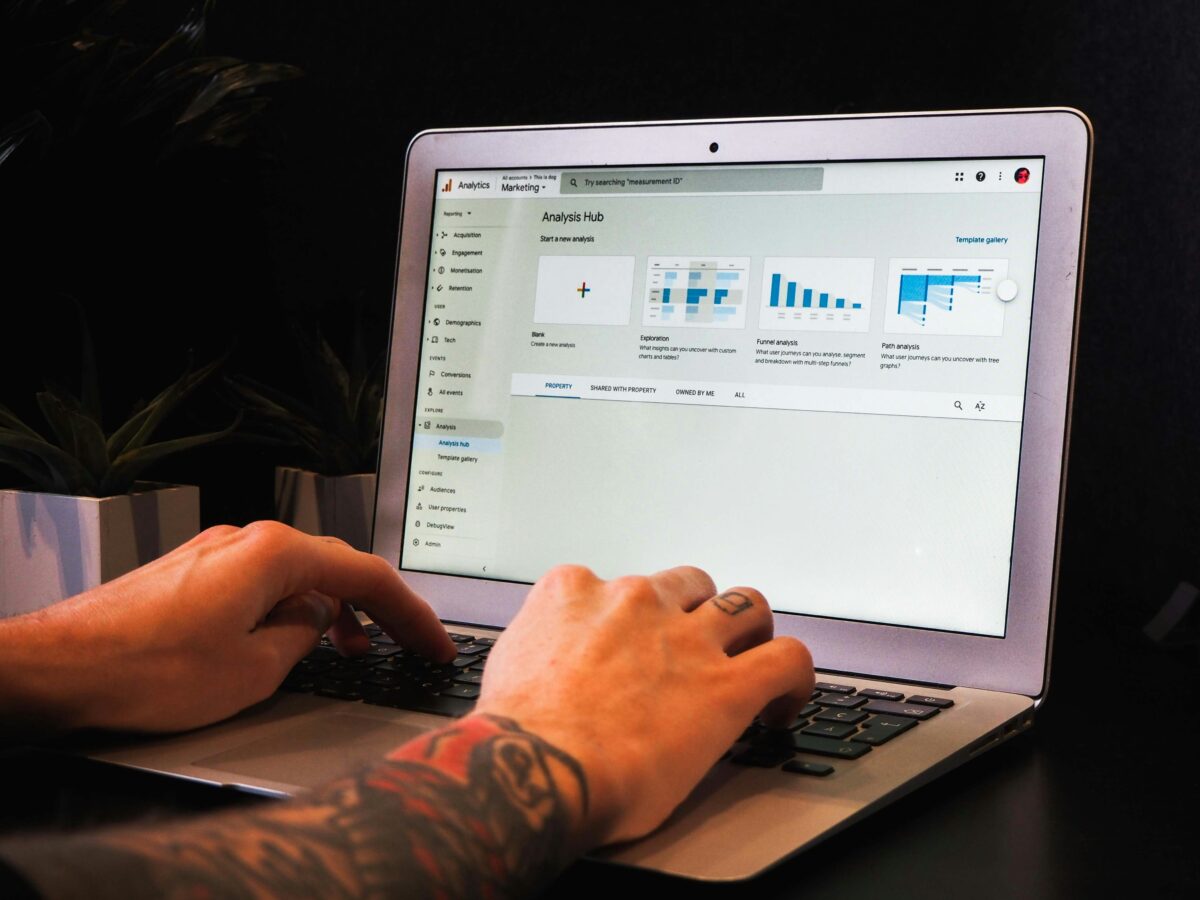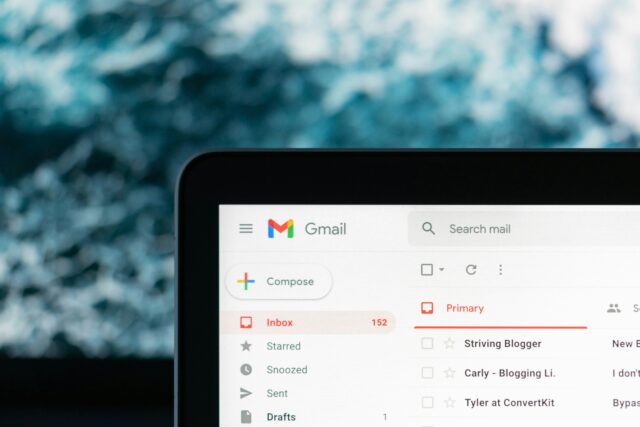“How do you measure the effectiveness of Digital PR?” is a question that’s been batted around for the last few years since the practice developed, particularly when compared to performance channels like Paid Advertising with straightforward metrics that are much easier to measure and use for analysing return on investment (ROI).
Traditionally, PR has always been one of the hardest marketing tactics to measure the true ROI of, but long gone are the days of measuring the size of print articles and attempting to equate an advertising equivalent to brand mentions.
Time has moved on and Digital PR is now a fundamental activity – and not just for driving brand awareness and building online credibility – when measured correctly, it’s possible to track real business performance and goals against links that are secured and the content and the campaigns that are being amplified.
In this blog, I’ll explore how you can achieve this and track the real business performance of your Digital PR activity.
A brief history of why Digital PR is so hard to measure
Firstly, let’s explore why measuring Digital PR has remained a persistent challenge. For this, we need to bring Traditional PR into the picture.
Traditional PR and Digital PR share fundamental principles; they’re very much two sides of the same coin. While Traditional PR relies on securing print and media placements, often through advertorial approaches, Digital PR focuses on earning online placements and links.
The difficulty in measuring both stems from their relationship-centric approach; outcomes are less predictable and controllable unlike the direct attribution and measurable return on investment seen in Paid Advertising for example. PR – whether Traditional or Digital – aims for earned or paid-for coverage and links.
While PR practitioners often celebrate successfully securing coverage, determining the broader impact of such coverage – especially in specific publications or media channels – has historically always been a challenge.
This challenge in showcasing tangible ROI can sometimes make Digital PR activity a tough sell to C-Suite executives, despite its evident impact in various other aspects of brand promotion.
Why is Digital PR essential to a business’ wider digital marketing strategy?
A study undertaken by TrustPilot in 2020 sought to understand consumer shopping behaviours online.
The response was overwhelming. Data showed that 62% of shoppers search for a brand online they are not familiar with before they commit to a purchase.
On top of that, ‘Online Reputation’ was interestingly cited as the number one way a company can improve trust with its customers.
The question a brand should be asking itself is: “When your next customer searches for your brand online, what are they going to see?” As well as a brand’s website and its various trust signals, what stories are your potential next customer going to find about your brand? Are they positive or negative? Are they going to create trust?
Digital PR has a fundamental role in determining that and by investing in these tactics, brands are investing in the development of an online reputation, creating a positive brand image, showcasing authority, and influencing perceptions at a time when misinformation is rife and the web is flooded with content that adds little to no value.
Done well, Digital PR is your chance to stand out online. In this next section of the blog, I’m going to dive into how you can begin to measure the performance of your Digital PR activity in a quantifiable way that provides value beyond these other significant benefits.
How Digital PR has previously been measured
As we’ve established, measuring the impact of this work is difficult but even in recent history, practitioners have attempted to define success to clients and stakeholders by reporting on vanity metrics.
AVE (Advertising Value Equivalency), UVPM (Unique Visitor Page Views) and impressions fall under this category.
AVE and UVPM can be clumped together here. Using any legacy media monitoring tool, you have most likely come across these metrics when a piece of coverage or link has been secured. Essentially, both of these metrics generate a number that tells you how much a piece of coverage would be worth in that particular publication if you’d paid for it – sort of like a ‘look at what you didn’t have to pay for with your advertising budget’ metric.
UVPM does what it says on the tin. It gives you an average number of readers that could have consumed that content, based on website traffic to that publication. We’re putting extra emphasis on the word could at this point.
Last but not least, impressions still stand the test of time, unlike AVE and UVPM, and typical show how many times a piece of content was seen. However, what it doesn’t do is tell you what actions were taken or whether a piece of content was even read at all.
The numbers for these metrics are often big and shiny and look positive when they’re put in front of a client or stakeholder, but the reality is they don’t tell you anything significant and should be taken with a pinch of salt.
Relying solely on vanity metrics can be misleading, as they often fail to capture the depth of engagement or the real impact of Digital PR on business objectives. As the digital landscape evolves, a more sophisticated approach to measurement is required.
Six ways brands should measure their Digital PR activity
We’ve now established what not to do when reporting, so now let’s look at what you should be looking at.
When aligned against a well-thought-out and collaborative SEO strategy, Digital PR becomes much easier to evaluate when looking at Organic growth. Below are some key areas you need to look at:
1. Domain Authority (DA)
DA is a number that shows you how authoritative your brand’s website is in the eyes of Google. It’s a number scored from 0 to 100 and the higher that number is, the more authoritative Google sees your website as. It’s important to remember this is not a Google-created metric, it’s a metric created by 3rd party tools like Semrush, Moz or Ahrefs. Instead, Google uses PageRank (although it technically no longer has a name), an algorithm that measures the importance of a given web page. It considers the number and quality of internal and external links pointing to a page. While DA and PageRank are not the same, experience shows that both do correlate.
Why is it important?
The higher that number is, the more likely your domain is to feature higher up the SERPs (Search Engine Results Pages). As part of the user’s experience, Google wants to achieve two things:
- Keep people on Google through featured snippets
- If they can’t keep you on Google, then you are directed to a useful source of information as part of its Experience Expertise Authority Trustworthy (E-E-A-T) guidelines.
How does Digital PR help to improve DA?
The way to build up trust in Google’s eyes is through a couple of ways:
- The quality, volume, and relevancy of backlinks being secured from external sources
- The variation in your backlink portfolio
Digital PR and link-building tactics are essential to growing these areas for any business that is aiming to become more credible online and, as a result, build up its domain authority score, rank higher in the SERPs, and have a better opportunity of capturing search traffic.
2. Quality and relevant backlinks
Backlinks have come back to the centre of attention in light of the latest revelations from internal Google documents revealed during their antitrust trial, showing that Google relies heavily on clicks and links.
Links have evolved with time and their importance has been debated intensively by experts in the industry, however, based on Google’s latest revelations, it’s more important than ever to fully understand their role. A backlink from another domain is recognised in Google’s eyes as a trust signal, showing that the author liked the content you’ve either distributed or created and think it’s relevant for their own audience.
And while every domain will naturally pick up and lose backlinks over time, Digital PR is often the difference between securing quality and relevant backlinks and spammy ones that you have no control over.
By landing coverage and links on websites that are being consumed by your audience and have a high domain rating, you’re in the process of securing backlinks that are aiding the organic growth of your website. In turn, securing these external backlinks is becoming increasingly easy to measure ROI against – more on that later.
3. Unique referring domains
Directly following on from the above point, quality and relevant backlinks are great but what’s even greater is when they’re coming from multiple sources.
Google puts a great deal of emphasis on domains having a varied backlink portfolio. There’s no greater trust signal online than your content, resources, and activity securing backlinks from several different sources, rather than the same domain over and over again.
Again, Digital PR is instrumental to this area of growth and it’s often the biggest differentiating factor between a brand seeing domain growth and not.
4. Brand mentions and coverage
These are also two sides of the same coin. A brand mention online is when a brand has received coverage on a website but doesn’t carry a backlink.
While Digital PR practitioners have prided themselves on securing links for the domains they work on, brand mentions are becoming more important in Google’s eyes.
Search engines now acknowledge the significance of brand mentions, even when not accompanied by direct links. These unlinked mentions, commonly known as “implied links,” contribute to providing search engines with a more organic comprehension of a brand’s online authority and reputation.
The idea behind this is that if people are discussing a brand, it likely holds importance. Gary Illyes from Google has hinted at this, implying that the search engine incorporates mentions into its ranking algorithm, indicating a potential departure from conventional link-centric metrics.
5. Non-brand search term growth
A lot of brands remain reliant on being found online by searchers looking for them, their products, and services directly through branded terms.
What that means, though, is that they’re missing out on a lot of potential searchers who may be in a vague and passive buying state, unaware of the service or product your brand offers.
There is plenty that can be done on-site to address that but Digital PR is a great tactic for scaling that growth in the SERPs and can be the difference between a brand ranking on page 2 and page 1 on Google.
6. Website traffic
The five measurement areas I’ve focused on up to now are external factors, analysing how Digital PR can grow brand awareness, credibility, trust, and scale organic growth on search engines.
But to add an extra layer on top, we need to know what impact all of these factors are having on our target website.
By utilising Google Analytics or modern PRM (Public Relations Management) tools, like Propel, we can build a clear picture of what impact a Digital PR’s external facing activity has had on our own domains. For example, we might see that website traffic has increased as a result of a campaign going live, or a the number of clicks through to a key category page has grown since building links to it.
Bonus tip: know and understand the competitor landscape
By taking the time to analyse the competitor landscape, you can begin to build a clear picture of where competitors are getting links from that you aren’t, but also start to make an educated assumption of what Digital PR tactics they are deploying to get links.
Tools like Ahrefs and Semrush, are excellent at showcasing a breakdown of competitor activity over a prolonged period of time and help Digital PR practitioners keep a close eye on how the landscape is changing and, potentially, how the brands they work with need to make strategic adjustments.
How to set up an effective measurement framework for Digital PR
Now that you have a clear understanding of some of the key metrics you need to be measuring Digital PR activity against, let’s look at a useful measurement framework to help track performance across external, on-site, and bottom-of-the-funnel activity.
As part of this, I’ll outline how you can bring benchmark metrics like Share of Voice (SoV) and Share of Search (SoS) into the mix to provide a comprehensive overview of the brand’s digital presence.
Here’s a basic framework you can set up in seven steps:
1. Set the overarching objective
Digital PR activity, like any other marketing tactic, needs an overarching goal it’s working towards. These goals can’t be vague – like raising brand awareness, for example; they need to be tangible. That could be something like ‘to hold the highest domain authority across organic competitors in the next 12 months’.
2. External brand metrics considerations
The ‘bread and butter’ metrics have already been covered, but let’s condense these into a list of must-have metrics to include as part of any measuring framework.
What to factor into your reporting:
- Domain authority growth
- The volume of backlinks secured from PR activity
- The average quality of backlinks secured from PR activity
- Brand mentions (unlinked) secured
- Brand sentiment (social)
- Unique referring domain growth
- Referral traffic
- Backlinks secured to key category pages
- Branded search growth
3. On-site brand metrics considerations
PR professionals are progressively acquainting themselves with digital measurement techniques. However, they’re less comfortable when it comes to analysing the impact of their activity on-site.
This demands a distinct set of tools and a different mindset. Embracing this shift in perspective is not only valuable but imperative in Digital PR’s goal in demonstrating ROI.
What to factor into your reporting:
- Growth in website traffic
- The volume of traffic landing on a linked category or blog page
- Time spent on pages
- Bounce rate
- Average position of non-brand search terms, against competitors
4. Bottom-of-the-funnel metrics considerations
Traditionally, PR measurement primarily concentrated on external facets within this framework, however, a noticeable shift is underway, with an increasing number of PR teams now delving into the measurement and reporting of a campaign’s direct impact on the bottom line.
Questions like the following are gaining prominence: How many sales can be directly attributed to PR efforts for an eCommerce retailer? To what extent did PR activities prompt donations for a non-profit organisation? And, critically, what is the measurable business impact created or influenced by PR initiatives?
This shift in focus underscores the need to gauge the tangible outcomes of PR efforts, transcending traditional metrics. Key performance indicators now extend beyond visibility metrics to include more concrete business-centric measurements, such as an increase in conversions and a tangible revenue growth.
What to factor into your reporting:
- Increase in conversions
- Increase in revenue
- Customer acquisition cost
- Attribution modelling
- Lead quality
5. Tools to help make all this possible
The acceleration in digital means that practitioners have a wealth of tools at their disposal to measure the activity. As part of your PR tech stack, you should consider:
- A PRM tool, like Propel
- Google Analytics
- Google Alerts
- Google Trends
- Backlinks data analysis
6. Reporting frequency
Like SEO, Digital PR is often labelled as a slow-burn activity. But by proactively reporting month-on-month to show immediate changes and quarter-on-quarter to review bigger landscape changes, key internal stakeholders will be taken on a journey as to how Digital PR is directly impacting their business.
7. Benchmarking
As I’ve discussed, implementing a Digital PR strategy with a business objective in mind is important, but also knowing how that fits in with the wider market is integral.
By implementing metrics like Share of Search (SoS) and Share of Voice (SoV) each year, we can begin to understand how Digital PR is impacting a brand’s performance online and benchmark it against organic competitors.
Both of these metrics are typically a leading indicator of market share and it is an excellent way to measure brand awareness.
In essence, widening the scope of reporting ensures that the true value of Digital PR is not confined to siloed metrics but is instead embedded in the larger digital ecosystem.
Summary
In the evolving landscape of Digital PR, measuring success has been a longstanding challenge compared to more straightforward metrics in Paid Advertising.
What we have always known is that Digital PR is crucial for online reputation management and brand credibility, particularly in influencing potential customers’ perceptions.
But Digital PR’s true value is best realised when integrated into the broader digital ecosystem and by shifting from vanity metrics to a holistic approach, embracing modern measurement tools, and scaling up reporting to connect PR efforts with broader business goals.
If you’re ready to scale your Digital PR performance, we’d love to talk. Get in touch today.





